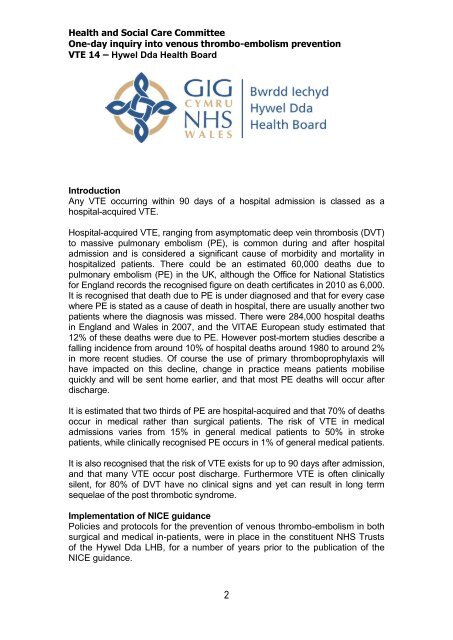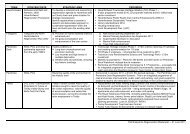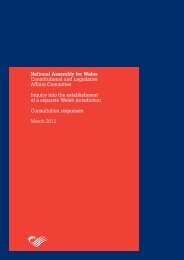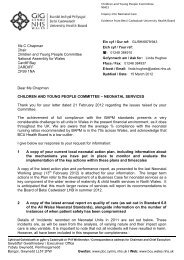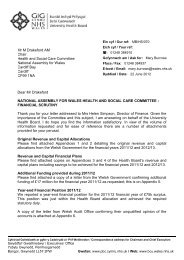Consultation response: VTE 14 - Hywel Dda Health Board PDF 266 ...
Consultation response: VTE 14 - Hywel Dda Health Board PDF 266 ...
Consultation response: VTE 14 - Hywel Dda Health Board PDF 266 ...
- No tags were found...
You also want an ePaper? Increase the reach of your titles
YUMPU automatically turns print PDFs into web optimized ePapers that Google loves.
<strong>Health</strong> and Social Care CommitteeOne-day inquiry into venous thrombo-embolism prevention<strong>VTE</strong> <strong>14</strong> – <strong>Hywel</strong> <strong>Dda</strong> <strong>Health</strong> <strong>Board</strong>IntroductionAny <strong>VTE</strong> occurring within 90 days of a hospital admission is classed as ahospital-acquired <strong>VTE</strong>.Hospital-acquired <strong>VTE</strong>, ranging from asymptomatic deep vein thrombosis (DVT)to massive pulmonary embolism (PE), is common during and after hospitaladmission and is considered a significant cause of morbidity and mortality inhospitalized patients. There could be an estimated 60,000 deaths due topulmonary embolism (PE) in the UK, although the Office for National Statisticsfor England records the recognised figure on death certificates in 2010 as 6,000.It is recognised that death due to PE is under diagnosed and that for every casewhere PE is stated as a cause of death in hospital, there are usually another twopatients where the diagnosis was missed. There were 284,000 hospital deathsin England and Wales in 2007, and the VITAE European study estimated that12% of these deaths were due to PE. However post-mortem studies describe afalling incidence from around 10% of hospital deaths around 1980 to around 2%in more recent studies. Of course the use of primary thromboprophylaxis willhave impacted on this decline, change in practice means patients mobilisequickly and will be sent home earlier, and that most PE deaths will occur afterdischarge.It is estimated that two thirds of PE are hospital-acquired and that 70% of deathsoccur in medical rather than surgical patients. The risk of <strong>VTE</strong> in medicaladmissions varies from 15% in general medical patients to 50% in strokepatients, while clinically recognised PE occurs in 1% of general medical patients.It is also recognised that the risk of <strong>VTE</strong> exists for up to 90 days after admission,and that many <strong>VTE</strong> occur post discharge. Furthermore <strong>VTE</strong> is often clinicallysilent, for 80% of DVT have no clinical signs and yet can result in long termsequelae of the post thrombotic syndrome.Implementation of NICE guidancePolicies and protocols for the prevention of venous thrombo-embolism in bothsurgical and medical in-patients, were in place in the constituent NHS Trustsof the <strong>Hywel</strong> <strong>Dda</strong> LHB, for a number of years prior to the publication of theNICE guidance.2


